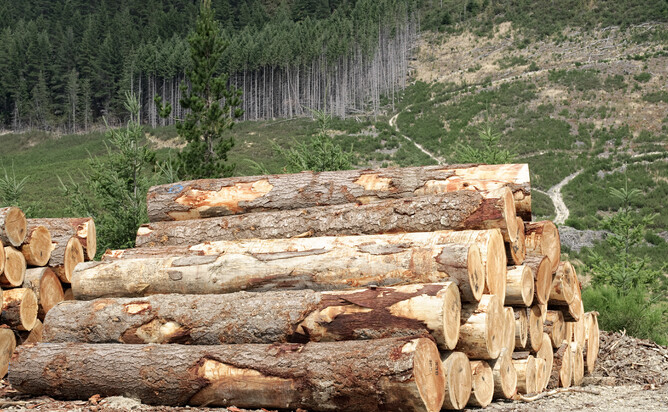Here's what we're told about forestry
- It’s good for the environment
- It protects marginal hillside land from erosion
- It creates employment in rural areas
But the reality is often far from this, with large-scale monoculture forestry often causing significant environmental problems and leads to poor future use options.
Let’s address those myths one at a time:
MYTH #1: It’s good for the environment
THE TRUTH: Even-aged plantations of one type of tree are a 25-30 year time bomb. Thousands of trees at the same stage of their life cycle are forced to compete for ground water, soil nutrients, growing space and light. All these factors suppress tree growth, increasing the possibility of insect and disease infestation and compromising genetic diversity.
Single-species planting is also dangerous in areas prone to forest fires, such as Australia and California. Huge swathes of trees such as eucalyptus are very fast burning and tend to explode with heat and send sparks to ignite other trees, but mixing them with other trees slows the spread.
But it’s at harvest time that the real environmental damage begins, as often new roading goes in and as the tree tops cover is removed, whole landscapes are exposed to erosion and scarring with precious top soil carried into streams then rivers.
MYTH #2: It protects marginal hillside land from erosion
THE TRUTH: Forestry is often promoted as an economic solution for marginal hillside land, but at harvest time this type of land is doubly impacted because of its surface-draining characteristics, so when the forest floor is suddenly exposed to weather it is inevitable that valuable topsoil will be lost causing the silting of nearby streams and rivers will result. This is compounded by the practice of leaving timber ‘slash’ – branches and off-cuts that are not considered economically worth harvesting – to gather on the forest floor. Over time, this discarded timber builds up, until heavy rain or flooding dislodges it, washing it into rivers, onto beaches and out to the ocean.
MYTH #3: It creates employment in rural areas
THE TRUTH: While forestry can create jobs at planting and harvesting time, for the 25-30 years in between it ties up what might have been productive farmland. This contributes to regions becoming ghost towns with reduced families living on rural land who are able to contribute and give energy to their local community. Then once forest harvesting is completed a horrible stump environment is left behind which leaves few immediate land use options other than to reforest or the prohibitively expensive option of rehabilitating the land back to being suitable for farming.
-----
Article written by Geoff Arden
We welcome any feedback you might have on this article. Email us at hello@restorativeforestry.org
